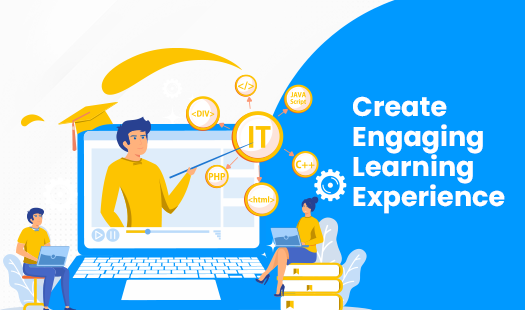
In today’s dynamic world, learning is no longer confined to traditional classroom settings. With advancements in technology and a growing emphasis on lifelong learning, creating an engaging learning experience has become crucial. Whether you’re a trainer, instructional designer, or simply someone passionate about sharing knowledge effectively, implementing these best practices can significantly enhance the learning journey for your audience.
1 . Personalization and Storytelling: Tailoring Engaging Narratives
One size fits all? Not if you want to make learning effective!
Embracing personalization in educational content is a game-changer. Learners have diverse backgrounds, preferences, and learning paces. Tailoring content to cater to individual needs and learning styles fosters engagement and comprehension.
Storytelling has been an age-old method of passing wisdom through generations. Its application in education is a potent tool for engagement. By weaving facts, concepts, and lessons into narratives, educators can captivate learners’ attention and create a memorable learning experience.
Why it Works:
Personalization caters to individual needs, while storytelling captivates attention and enhances understanding.
Implementation:
- Understanding Learners’ Preferences: Conduct surveys or assessments to identify learning preferences—visual, auditory, kinesthetic, etc. Gather data on interests, prior knowledge, and learning styles.
- Narrative Development: Craft narratives that resonate with learners’ experiences, integrating key concepts seamlessly. Create relatable characters or scenarios that reflect diverse perspectives within the learning material.
- Multimedia Storytelling: Utilize multimedia tools to create engaging visual or audio stories. Incorporate visuals, animations, or sound effects to complement the narrative and reinforce learning points.
Interactive and Collaborative Learning: Active Participation for Deeper Understanding
Passive learning often leads to disengagement. Incorporating interactive elements not only sustains attention but also enhances retention and understanding. When learners actively participate in the learning process, they’re more likely to retain information and apply it effectively.
Learning is a social endeavour. Encouraging collaboration and facilitating discussions create an interactive ecosystem where ideas flourish and perspectives broaden.
Why it Works:
Interactive elements sustain attention, while collaboration broadens perspectives and encourages active learning.
Implementation:
- Gamification Elements: Introduce quizzes, challenges, or simulations that incentivize participation and progression. Incorporate rewards or badges to acknowledge achievements.
- Multimedia Presentations: Develop multimedia presentations with interactive features. Include clickable elements, drag-and-drop activities, or interactive quizzes to engage learners actively.
- Collaborative Environments: Establish online forums or dedicated platforms for discussions. Assign group projects or case studies that foster teamwork and encourage the sharing of ideas and perspectives.
3 . Multisensory Techniques and Adaptive Learning: Embracing Diversity and Flexibility
Humans learn through multiple senses. Incorporating multisensory elements in learning materials enhances engagement by catering to different learning styles and preferences.
Recognizing individual learning styles and pacing is paramount. Customizing learning paths based on learners’ strengths, preferences, and progress fosters a more personalized and effective learning experience.
Why it Works:
Multisensory approaches cater to various learning styles, while adaptability ensures personalized learning paths.
Implementation:
- Multisensory Content: Utilize diverse materials—visual aids, infographics, videos, tactile objects—to engage multiple senses. Offer hands-on experiences or experiments to accommodate kinesthetic learners.
- Varied Formats: Provide content in different formats—text, podcasts, interactive modules—to accommodate diverse preferences. Tailor materials based on learners’ interests and proficiency levels.
- Adaptive Platforms: Implement adaptive learning platforms that analyze learners’ progress. Offer personalized content and self-paced modules based on individual learning needs.
The world of learning is evolving rapidly, and the key to staying relevant lies in embracing these best practices. As we navigate this ever-changing business landscape, prioritizing an engaging learning experience not only enhances knowledge acquisition but also develops a lifelong love for learning.

